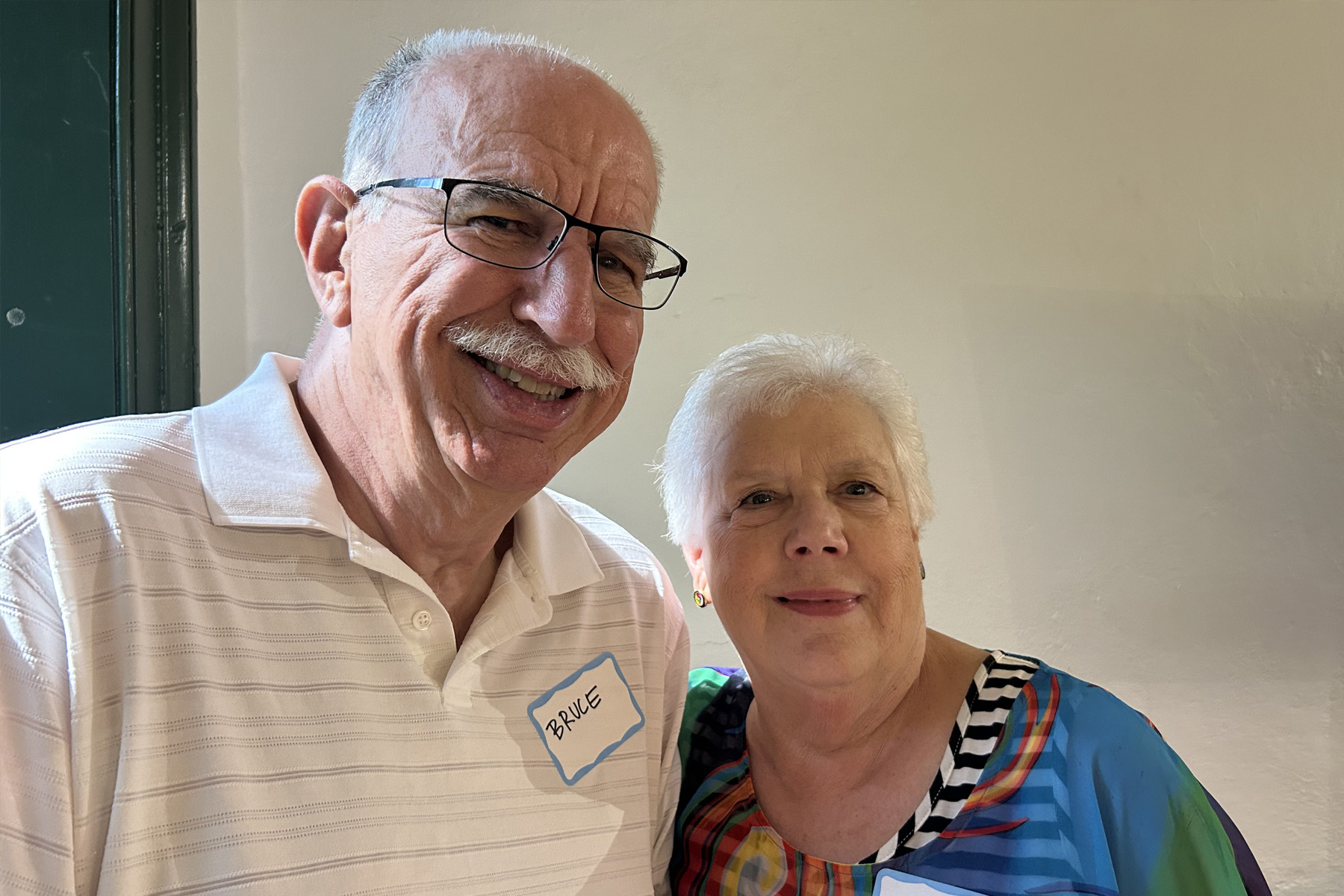Pictured above: Mrs. Martha Wofford with her husband, Bruce Wofford
In the early 2000s, Martha Wofford joined a group of her fellow Johnson County Young Matrons on a field trip to visit the Shawnee Indian Mission. Like so many others, she’d driven by the Mission many times, but had just never stopped. So this was her chance. All it took was one visit. That very day, she discovered that her “heart belongs to the Mission.” Now, decades later, she’s still re-inventing the whole concept of field trips at the Mission.
Following up that first impression, Martha worked with the State Office of Education to integrate a field trip to the Mission into the state-wide fourth grade curriculum on the Westward Expansion. Working together they expanded the outing into an all-day “Trails at the Mission” experience that now includes a covered wagon train crossing with obstacles and surprises confronting the young travelers. As part of the complete program, Martha personally visits each classroom that’s scheduled for a Mission trip. Using maps from the mid 1800s and other props, she prepares the students for the very full day that awaits them at the Mission.
Always comfortable in a classroom, Martha herself is a retired elementary school teacher. In that former life, she taught fifth grade and identified social studies as “her thing.” She always loved to watch kids get excited about history. So Martha and the Mission were a natural alliance. One could say she simply discovered a new classroom, created a curriculum and kept right on teaching.
The ‘Trails at the Mission’ field trip is divided into two major parts. First, each student is randomly assigned a character from the group of westward travelers and given a brief background story and a family connection for that character. There are a total of six extended families in the wagon train, each of which gets a scaled down covered wagon for the crossing.
The family members work as a team to shop at the Mission general store and load up their family wagons with the supplies they think they’ll need for the trip. Those are important choices, just as they were for the original settlers. Then as the students pull their wagons on a course around the Mission grounds, ‘situation cards’ randomly present obstacles, problems and surprises that the pioneers have to solve along the way.
Some wagons and their travelers arrive at the final destination; some wagons make it but with fewer travelers; and some wagons can’t finish the trip and have to make their homesteads along the trail. Whatever the outcome, every traveler has a memorable adventure and gains new insights on the hardships along the trail.
The second part of the field trip allows the students to experience a day in the life of their pioneer counterparts: ten-year old students living on the prairie in the mid-1800s. Students visit an authentically equipped prairie schoolroom; perform daily chores; meet local tradespeople like blacksmiths, beekeepers, weavers and millers; listen to local story-tellers describe their experiences; and romp through recess trying their hands at period games. There’s even a session with a local marble maker who explains the mechanics of fun using the simplest of classic toys.
The challenge of casting, costuming and training all 56 of the presenters is a major undertaking. Fortunately, Martha has the talents, skills and energy for the job. She’s also recruited legions of volunteers, all of whom are costumed and in character for each field-day production.
Some days during peak field trip season, the buses deliver over a hundred excited, energetic nine- and ten-year-olds with their teachers and parent escorts. Thanks to the years spent planning and staging the day’s activities, each field trip seems to yield dozens of junior Mission ambassadors eager to share their discovery and lead their own families on an impromptu day trip to the Mission.

